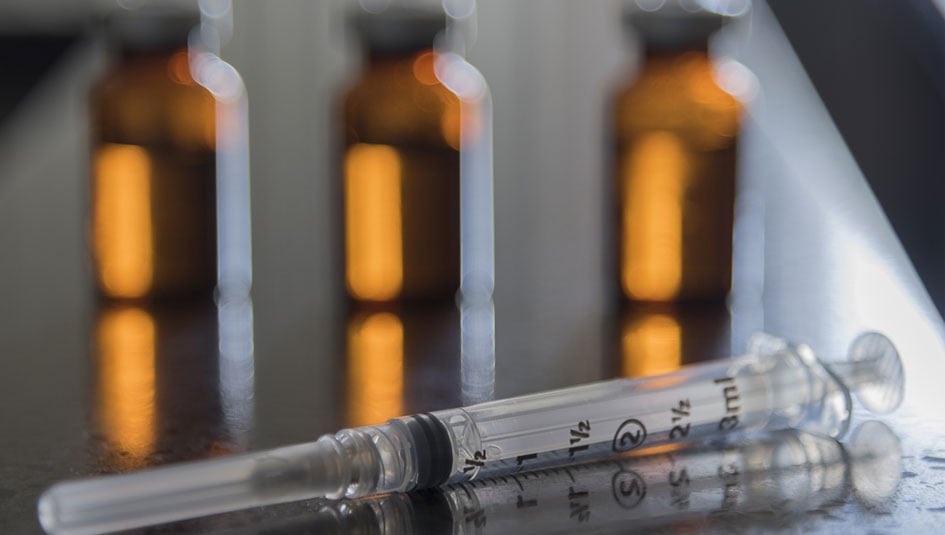Ten Things People Do for Insulin

There is no denying that insulin costs are severely inflated. As a result, many individuals with Type 1 diabetes have had to be shrewd when it comes to obtaining the drug and making it last. We recently asked some readers to share their hacks—good or bad, legal or illegal, safe or unsafe. Note: We are not endorsing these practices, but sharing to increase awareness of the enormous financial, physical, and psychological resources that T1D requires, as well as the desperate measures that so many individuals take just to stay alive.
1. Contacting the Family of Deceased PWDs
More than a few readers confessed to reaching out to the family and loved ones of an older, insulin-dependent individual after his or her death to inquire about insulin and supplies. These readers reported that most often, surviving family members were more than willing to oblige, as they did not want to see drugs or supplies go to waste. According to one reader, “It was really awkward the first time, like ‘Sorry for your loss. What about the insulin?’ But I think people understand we need it to live.”
2. Neglecting to prime pens and pumps
Individuals who rely on Multiple Daily Injections are instructed to prime the insulin pen before giving a dose. This ensures the right dosage of insulin and reduces the risk of air bubbles in the blood stream. But “that’s a half unit or more of perfectly good insulin that is flicked into the air each time you bolus,” says one college student living with the condition. Not surprisingly, many now skip this step. Some pump users claim to reuse the tubing so they don’t have to prime a new one.
3. Using expired insulin
Not a shock: people use insulin past the expiration date all the time. According to some experts, this is not such a terrible idea, since the drug does not exactly go “belly up” at the stroke of midnight 28 days after being opened.
Read Can I Use My Insulin After its Expiration Date?
4. Getting the doctor to over prescribe
Several readers reported asking doctors for more insulin than needed to prepare for changing financial circumstances, such as upcoming unemployment. Some even reported that they misrepresented insulin needs to the doctor in order for the provider to overprescribe in good conscience. “I may say I use 15 units of novolog 3 times daily, instead of 10 units daily. I up the Lantus dosing by about 30% as well. The script doesn’t save on cost (copay still applies after the deductible, which every type 1 is guaranteed to hit),” but it creates a buffer in case of holiday or other unforeseen circumstances.
5. Going to the hospital
If you’re out of insulin and can’t refill, a trip to the emergency room may be the only immediate option. One reader says, “I have gone to the ER and then left against medical advice after they gave me an insulin dose.”
6. Increasing exercise dramatically
Exercise is popularly used in place of insulin and as a means to decrease dosing needs. “When it’s close to payday and I’m out of insulin, I run 5-6 miles, sometimes more, after dinner. But this is kinda dangerous because I can drop too low and then ping pong for the next 24 hours.”
Read Ketones and Exercise: What You Need to Know
7. Purchasing insulin on Craigslist or Reddit
Is it legal? No. But given the choice between life and death, it’s a risk many are willing to take.
8. Saving empty pens
According to one reader, “A pen that reads 0 still has about 10 units. Bust out a syringe and you’re in business.”
9. Saving empty bottles
One community member found a way to milk every last drop: “I took all of the ‘empty’ bottles and put them upside down in a container, and stuck them somewhere humid for several hours. (I thought condensation helped the process?) A lot of the time, I could squeeze a few units out of each bottle once it sat for a bit, and the insulin would collect at the bottom. Old/less effective insulin is better no insulin.”
10. Avoiding carbs
The most intuitive hack for going without insulin may be to consume fewer carbohydrates, which is a very popular strategy among members of the community. When individuals get low on insulin, they sometimes turn to protein, fats, and/or cheap foods like Jello, which can give the feeling of satiety.
Want to learn more about insulin access issues in the United States and around the world? Read our recent interview with two health advocates about T1International and the #insulin4all movement.
Read Is the Public’s Lack of Empathy to Blame for Increased Insulin Costs?
Do you have an idea you would like to write about for Insulin Nation? Send your pitch to submissions@insulinnation.com.
Thanks for reading this Insulin Nation article. Want more Type 1 news? Subscribe here.
Have Type 2 diabetes or know someone who does? Try Type 2 Nation, our sister publication.